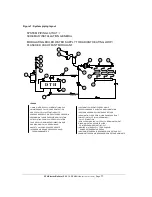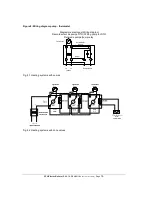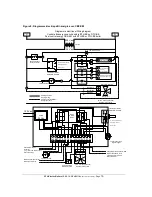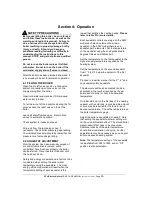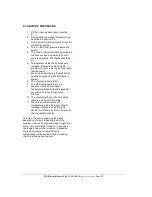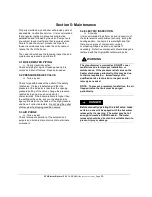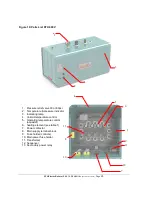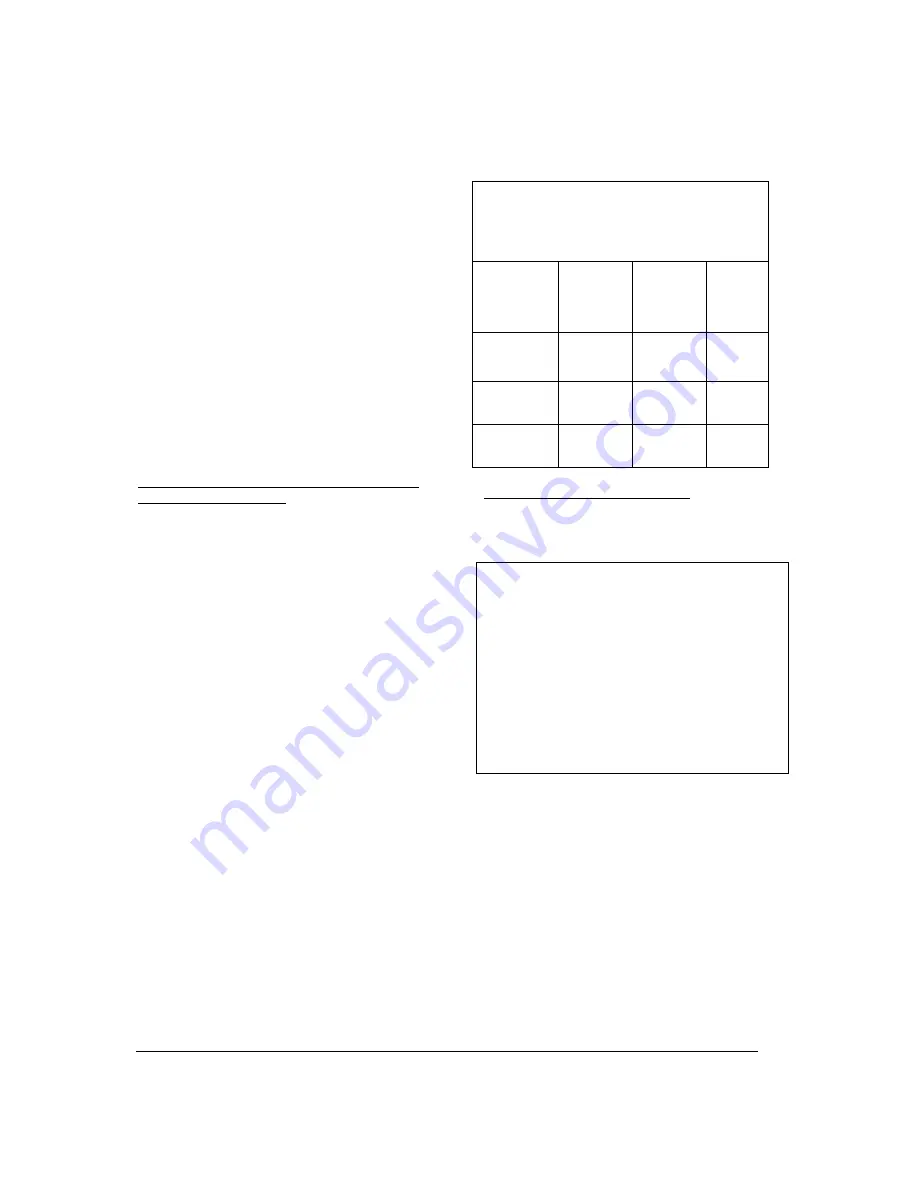
DTH Electric Boilers USE & CARE MANUAL
(Revision June 2014)
, Page
8.
3.4.7 Circulator zoning recommendations
The preferred location of the circulator pump for
each zone is on the boiler supply side, with the
expansion tank between the boiler and the
pump.
A flow check valve must be installed in each
zone, preferably on the outlet side of each
circulator pump, to prevent water flow to other
zones where no heat is required.
3.4.8 Zone valve zoning
recommendations
The preferred location of the circulator pump is
on the boiler supply side, with the expansion
tank between the boiler and the circulator. Use
zone valves with low pressure drop.
3.4.9 Pump & pipe sizing
3.4.9.1 Boiler water temperature drop (BWTD)
through the heating loop
A simplified design method based on a 20°F
temperature drop (BWTD) between boiler outlet
and inlet is commonly used. Although such a
method is widely used and generates
satisfactory system performance when applied
properly, it does not determine the system
operating point. The pipe size is often
uneconomically large, and the actual system
flow rate is likely to be much higher than
intended. Such design methods seldom
consider temperature drops higher than 20°F,
which results in overdesign.
Another method by which the boiler water
temperature drop (BWTD) could be calculated
is to assume a constant supply boiler water
temperature minus the return boiler water
temperature. For example a boiler might have
a return temperature of 140 °F. Assuming a
constant supply boiler temperature of 180 °F,
the BWTD would be 40 °F ( = 180 °F – 140 °F).
Second example: If the boiler water has a return
temperature of 120 °F and the boiler supply is at
140 °F, then the temperature drop is 20 °F
(=140 °F – 120 °F).
The following table suggests temperature drops
(BWTD) to be used in calculating the pump flow
rate.
Table 5: Temperature rise through the boiler
PROPOSED BOILER WATER
TEMPERATURE RISE THROUGH THE
BOILER (BWTD)
System
type
Boiler
water
Supply
tempera-
ture
Boiler
water
Return
tempera-
ture
BWTD
Baseboards
190°F to
140°F
170°F to
120°F
20°F to
40°F
Cast Iron
Radiators
160°F to
130°F
140°F to
110°F
20°F to
40°F
Radiant
In-Floor
130°F to
90°F
110°F to
70°F
10°F to
20°F
3.4.9.2 Pump flow rate calculation
The boiler output rating must correspond to the
calculated heating load. Use the equation below
to calculate the pump flow rate.
Pump flow rate = Boiler output
÷÷÷÷
BWTD
÷÷÷÷
500
•
Pump flow rate is expressed in US gallons
per minute or GPM.
•
The Boiler output ( in net BTU per hour) is
the maximum amount of heat to be
transferred through the heating loop to meet
the heating load.
•
BWTD is the boiler water temperature drop
For example, an electric boiler rated at 144KW
has a power output of 491,328 BTU per hour.
The system is designed for a temperature drop
(BWTD) of 20°F.
Required pump flow rate = 491,328
÷
20
÷
500 =
49.1 GPM
The following table lists the required pump flow
rate as a function of boiler power and BWTD.
Содержание DTH 102
Страница 4: ...DTH Electric Boilers USE CARE MANUAL Revision June 2014 Page 4 Figure 1 Component identification ...
Страница 12: ...DTH Electric Boilers USE CARE MANUAL Revision June 2014 Page 12 Figure 2 Wiring diagram DTH 96KW 240V ...
Страница 13: ...DTH Electric Boilers USE CARE MANUAL Revision June 2014 Page 13 Figure 3 Wiring diagram DTH 144KW 480V ...
Страница 14: ...DTH Electric Boilers USE CARE MANUAL Revision June 2014 Page 14 Figure 4 Wiring diagram DTH 144KW 600V ...

















